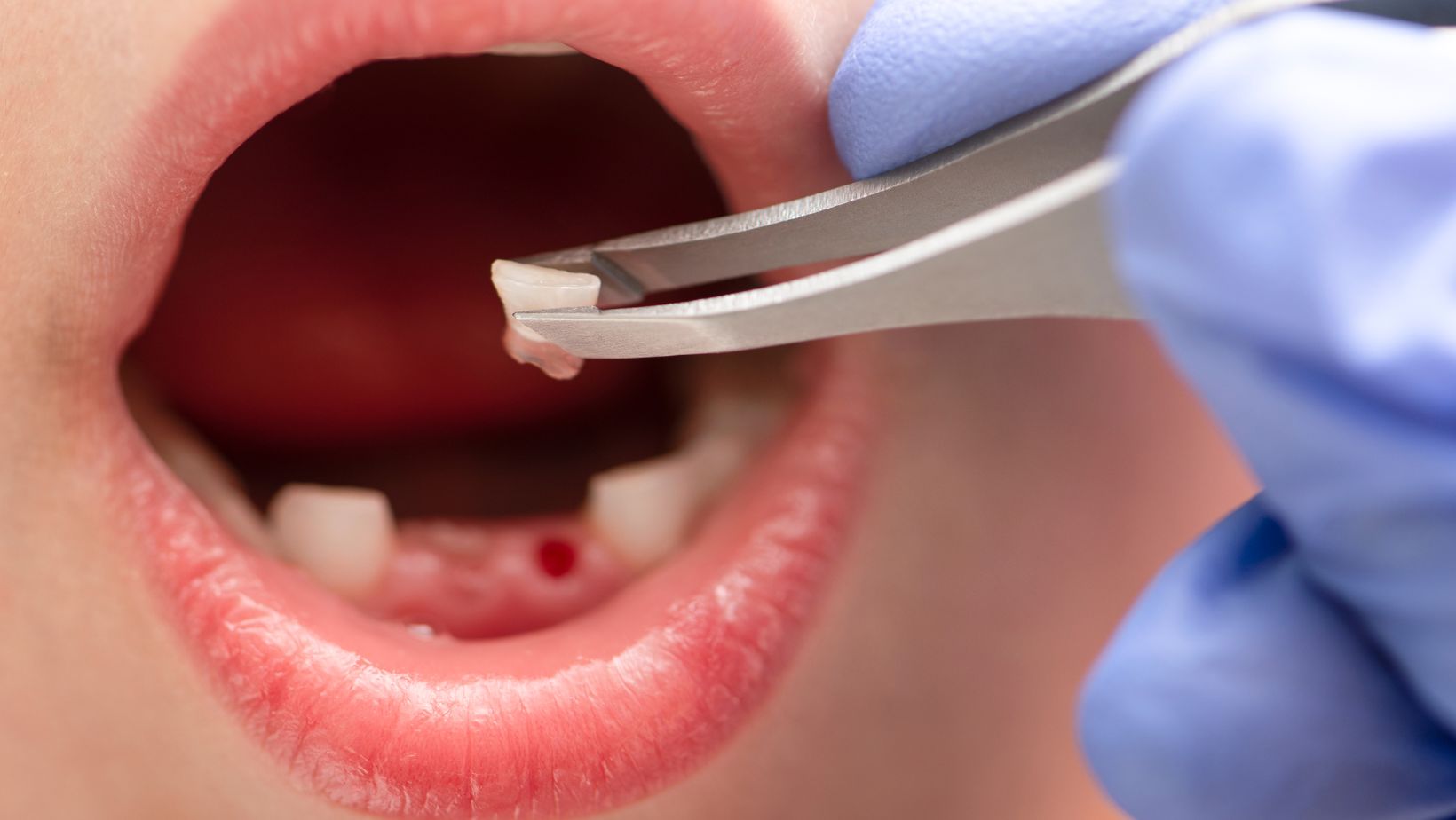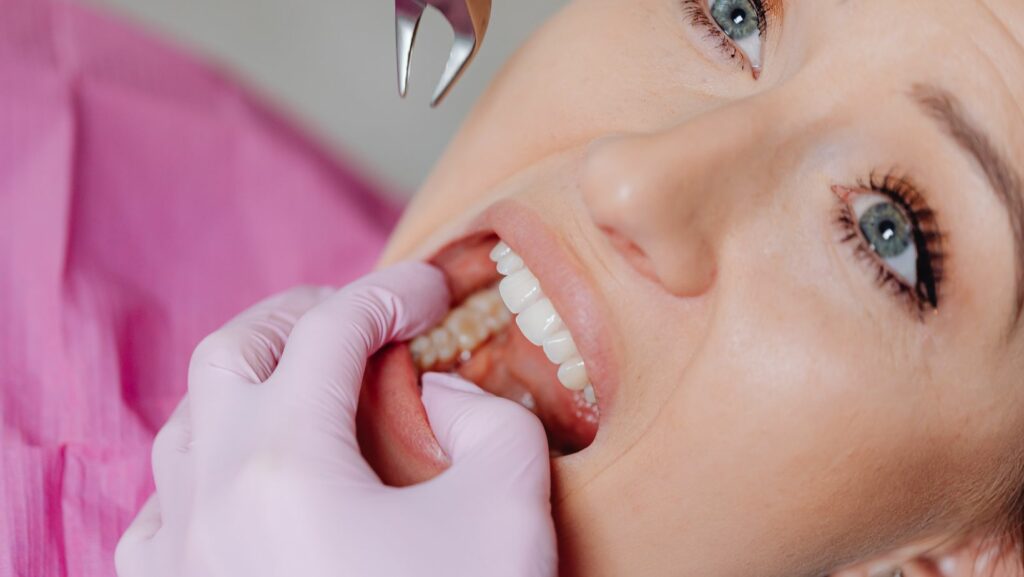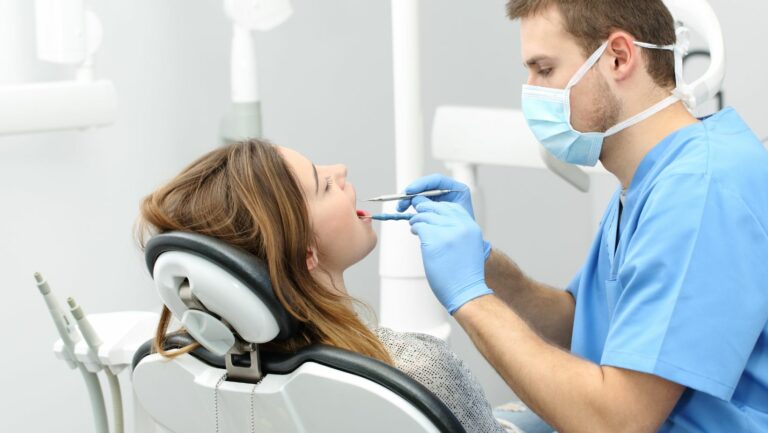
Tooth Extraction With Inflammation – Is It Possible to Remove a Tooth With an Infection?
When you have a tooth with inflammation or infection, you might wonder if it’s safe or even possible to have that tooth extracted. Tooth extraction can be performed on an infected tooth, but only after careful infection control, often involving antibiotics or drainage, to reduce the risk of complications. Removing an infected tooth without managing the infection first can lead to the spread of bacteria and worsening inflammation.
You should know that dentists usually try to save an infected tooth through treatments like root canals before considering extraction. However, if the infection is severe or the tooth is too damaged, extracting the tooth may be necessary to protect your overall health. Understanding the risks and the steps involved helps you make informed decisions about your dental care.
Can an Infected or Inflamed Tooth Be Extracted?
You can have a tooth extracted even if it is infected or inflamed, but certain conditions must be considered before proceeding. The severity of the infection, your overall health, and the risk of complications all influence the timing and approach to extraction.
Common Beliefs and Misconceptions
Many people believe an infected tooth cannot be removed until the infection clears. While infection does not physically prevent tooth extraction, doing it without proper preparation can increase risks.
Some think immediate removal always causes complications like infection spreading or excessive pain. In reality, dentists assess each case individually. Antibiotics or other treatments may be used first to reduce swelling and bacterial load, which helps make anesthesia more effective and minimizes risks.
An infected tooth has to be carefully managed, but extraction is often necessary to stop the infection from worsening or spreading to other areas like the jaw or sinuses.
Situations When Extraction Is Necessary
Extraction becomes necessary when the tooth is beyond repair or is causing ongoing infection that endangers your health. Examples include:
- A tooth with advanced pulpitis and periapical infection leading to bone loss
- An abscessed tooth that does not respond to antibiotics or drainage
- Persistent infection causing fever or spreading to surrounding tissues
- Recurring infection originating from the same tooth, despite treatment attempts
In these cases, removal stops the infection source and lowers the risk of systemic issues such as sepsis. Your dentist will use imaging and clinical exams to determine if extraction is the safest and most effective option for you.
When Extraction Should Be Delayed
If inflammation or infection causes significant swelling, pain, or fever, your dentist may delay extraction. This allows time to control the infection and reduce inflammation first.
You may be prescribed antibiotics to lower the bacterial load and ease swelling. This also improves anesthesia effectiveness and reduces the chance of complications like dry socket or infection spread.
Extraction might also be postponed if you have underlying health issues, such as diabetes or blood clotting disorders, requiring special management.
During the delay, other treatments like abscess drainage or root canal therapy might be considered to stabilize your condition before extraction. This cautious approach supports safer, smoother healing after the procedure.
Signs, Diagnosis, and Assessment of Infected Teeth
Identifying and evaluating an infected tooth involves observing specific symptoms, undergoing professional dental examination, and understanding the potential risks of leaving the infection untreated. Accurate diagnosis guides the choice between treatments like root canal therapy or extraction.
Recognizing Symptoms of Infection
You may experience persistent toothache that worsens with pressure or chewing. Sensitivity to hot or cold foods often accompanies this pain.
Look for swelling around the gum near the infected tooth. You might notice redness or tenderness, sometimes with visible pus or a tooth abscess.
Other signs include fever, bad taste or odor in your mouth, and general discomfort. These symptoms suggest the infection has progressed beyond simple decay and needs prompt attention.
Dental Examination and Imaging
Your dentist will perform a clinical exam to check for swelling, gum condition, and tooth mobility. They will also ask about your symptoms in detail.
X-rays are critical to assess the infection’s extent. Imaging reveals bone involvement, abscess formation, or decay reaching the tooth pulp.
This evaluation helps determine if the infection is localized or affecting surrounding structures, guiding whether extraction or other treatments are needed.
Risks of Untreated Dental Infections
An untreated tooth infection can worsen, causing bone loss around the affected tooth and damage to gum tissue.
The infection may spread locally, forming abscesses, or enter the bloodstream, leading to systemic infections that can affect other organs.
Delaying treatment increases the risk of complications such as severe pain, jaw swelling, and in rare cases, life-threatening conditions like sepsis.
Early diagnosis and intervention are essential for preserving oral and overall health.
Treatment Options Before Extraction
Before a tooth extraction due to inflammation, managing infection and pain is critical. You may need specific therapies to control swelling, reduce bacterial load, and decide on the most appropriate treatment to preserve your oral health.
Antibiotic Therapy and Infection Control
If your tooth is inflamed and infected, antibiotics are often prescribed to reduce bacterial infection before extraction. This treatment helps control swelling and pain, increasing the chances of a smoother extraction and better healing afterward.
You typically take antibiotics for several days, sometimes starting a few hours before the procedure. This reduces the risk of spreading infection and helps anesthetics work more effectively during extraction. Your dentist will carefully evaluate your overall health and infection severity to determine the right antibiotic and dosage.
Antibiotic therapy alone is not a permanent solution but a preparatory step to make surgery safer. Avoid skipping this step, especially if you have swelling or an abscess.
Drainage and Abscess Management
If your infection has caused an abscess, drainage may be necessary before or alongside antibiotics. Abscesses are pockets of pus that increase pain and tissue pressure, complicating extraction if untreated.
Your dentist might perform a minor incision to release pus and reduce inflammation. This helps control infection spread and improves your comfort. Drainage is often combined with antibiotics and offers temporary relief to allow safer tooth removal later.
Prompt abscess management lowers the risk of complications such as systemic infection or further tissue damage. You should contact your dentist immediately if you notice swelling, fever, or persistent pain.
Decision Between Root Canal and Extraction
Not every infected tooth requires extraction. Root canal treatment is a common alternative that removes infected pulp, cleans root canals, and seals the tooth to preserve it.
Your dentist will assess your tooth’s condition with imaging to decide if root canal therapy is viable. This option is preferred if the tooth structure is still sound and infection can be controlled without removal.
Extraction becomes necessary when infection has caused extensive damage, bone loss, or if abscesses don’t respond to initial treatments. You and your dentist should discuss the benefits and risks of both options to choose the best approach for your dental care and long-term oral health.
The Extraction Process and Recovery for Infected Teeth
Removing a tooth with an infection involves specific steps designed to control infection, minimize pain, and support healing. You will receive anesthesia to prevent pain and a tailored extraction method depending on the tooth’s condition. Proper care afterward is essential to reduce complications and promote recovery.
Preparation and Local Anesthesia
Before the extraction, your dentist will review your medical history and current medications to avoid complications. Antibiotics may be prescribed beforehand if the infection is severe or widespread to help reduce bacterial presence.
Local anesthesia is used to numb the area around the infected tooth. This prevents pain during the procedure, although you may feel pressure as the tooth is loosened or removed. The numbness allows the dentist to work safely, even with inflamed tissues present.

Your dentist will explain the process and answer any questions, ensuring you understand the steps and what to expect during and after the extraction.
Extraction Procedure Types
There are two main types of extraction: simple and surgical.
- Simple Extraction: Used for teeth that are visible and easily accessible. The dentist loosens the tooth using forceps and removes it. This method is quicker and less invasive.
- Surgical Extraction: Required if the tooth is broken, impacted, or located beneath the gum line. This procedure involves making an incision in the gum and sometimes removing small amounts of bone to extract the tooth.
In the case of infected teeth, your dentist chooses the method based on how much the infection has affected the tooth and surrounding tissues.
Post-Extraction Care and Healing
Immediately after extraction, gauze is placed over the site to control bleeding. You should bite gently on the gauze for 30–45 minutes to help form a blood clot, which is crucial for healing.
Post-extraction care includes:
- Avoiding strenuous activity for at least 24 hours to prevent dislodging the clot.
- Eating soft foods and avoiding hot or spicy dishes that may irritate the area.
- Maintaining oral hygiene by gently brushing other teeth and rinsing with saltwater starting 24 hours after extraction, helping clean the site without disturbing healing tissue.
Typical healing takes about one week, during which swelling and mild discomfort are common but manageable with pain relievers and ice packs.
Potential Complications and Their Prevention
Infections or complications can arise if care instructions are not followed or if the infection was severe.
Key complications to watch for:
- Dry socket: Occurs when the blood clot is dislodged too early, exposing bone and nerves, causing severe pain.
- Persistent swelling or pus: Signs of ongoing infection.
- Excessive bleeding lasting over 24 hours.
To reduce risks:
- Avoid smoking or using straws for at least 48 hours, as suction can dislodge the clot.
- Follow antibiotic and pain medication schedules exactly.
- Keep the extraction site clean but do not disturb the clot.
If you notice worsening pain, fever, or uncontrolled bleeding, seek your dentist’s advice immediately to prevent serious issues.
Frequently Asked Questions
You need to understand the safety, risks, and special care involved when extracting a tooth with infection and inflammation. Proper timing, antibiotic use, and managing symptoms like swelling are critical to prevent complications and support healing.
Is it safe to undergo a tooth extraction if there’s an existing infection?
Extraction can be safe if managed correctly. However, dentists usually recommend controlling the infection with antibiotics first to reduce swelling and pain. This helps ensure effective anesthesia and lowers complication risks.
What are the risks of removing an infected tooth without prior antibiotic treatment?
Removing an infected tooth without antibiotics can lead to delayed healing and serious complications. You may face increased pain, dry socket, or spread of infection to surrounding tissues or the bloodstream.
Can dental extraction effectively stop the spread of infection present in a tooth?
Extracting the infected tooth removes a major source of infection. However, if the infection has spread to surrounding tissues, additional treatment like antibiotics or drainage may be necessary to fully control it.
Is immediate tooth extraction advisable in cases of severe facial swelling due to infection?
Severe swelling usually requires you to start antibiotic therapy before extraction. Immediate removal can worsen inflammation or allow infection to spread, so dentists often delay extraction until swelling decreases.
Are there any special considerations for extracting a tooth that is currently inflamed?
Inflamed tissue can increase risks and discomfort during extraction. You should inform your dentist about any medications or health issues, follow preparation instructions closely, and expect a tailored treatment plan.
What is the protocol for handling a tooth extraction when the patient has significant infection?
The standard protocol involves thorough examination and imaging, prescribing antibiotics to control the infection first, and scheduling the extraction once inflammation subsides. Pain management and careful post-op care are also emphasized.


